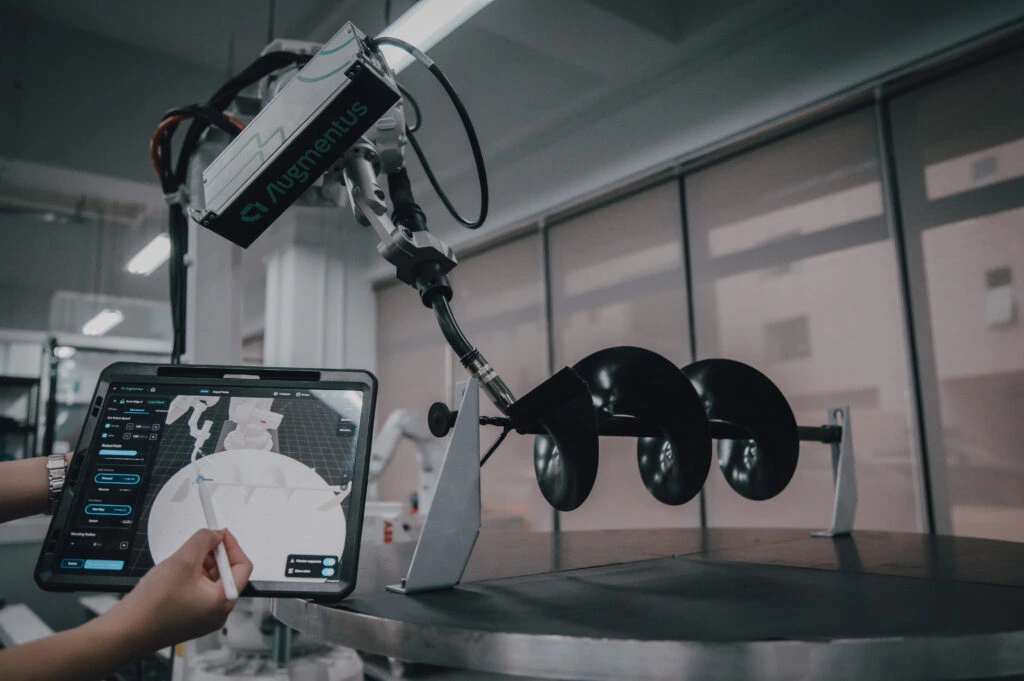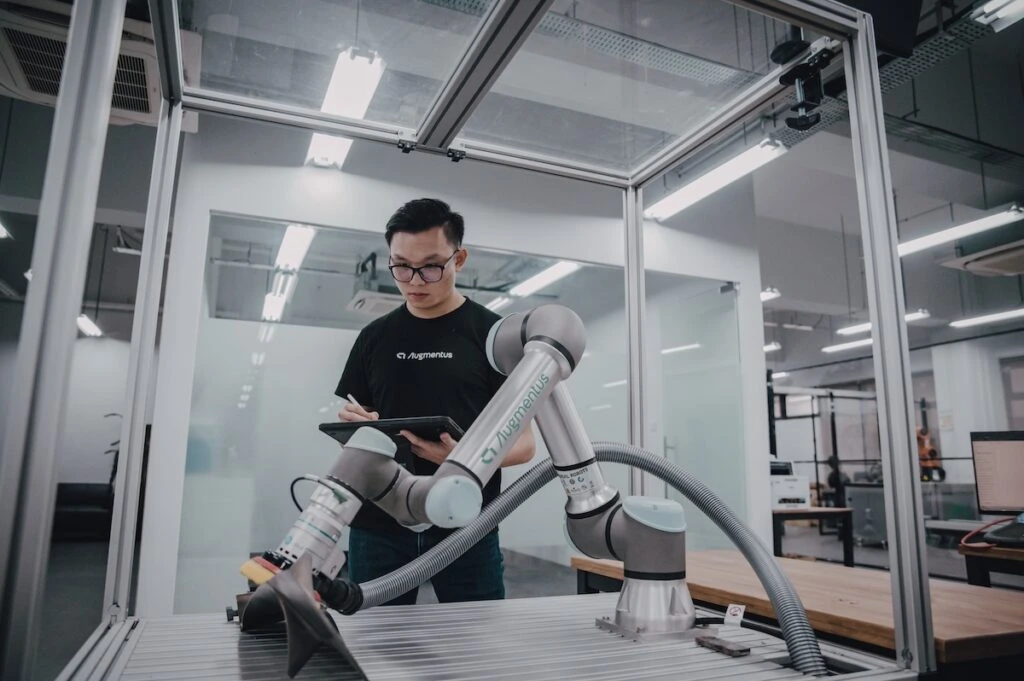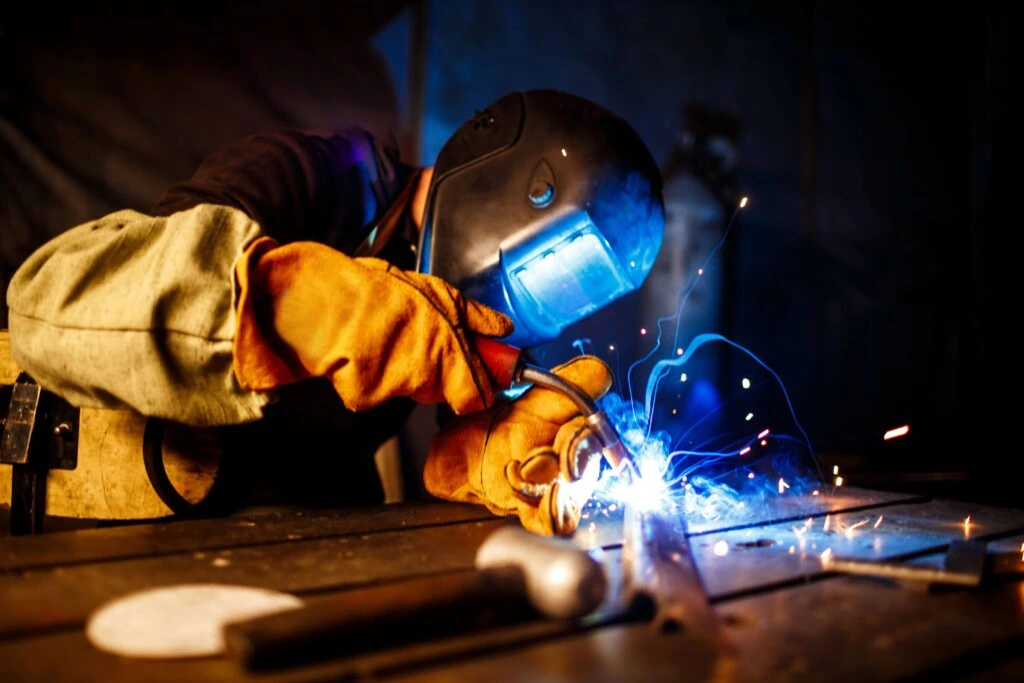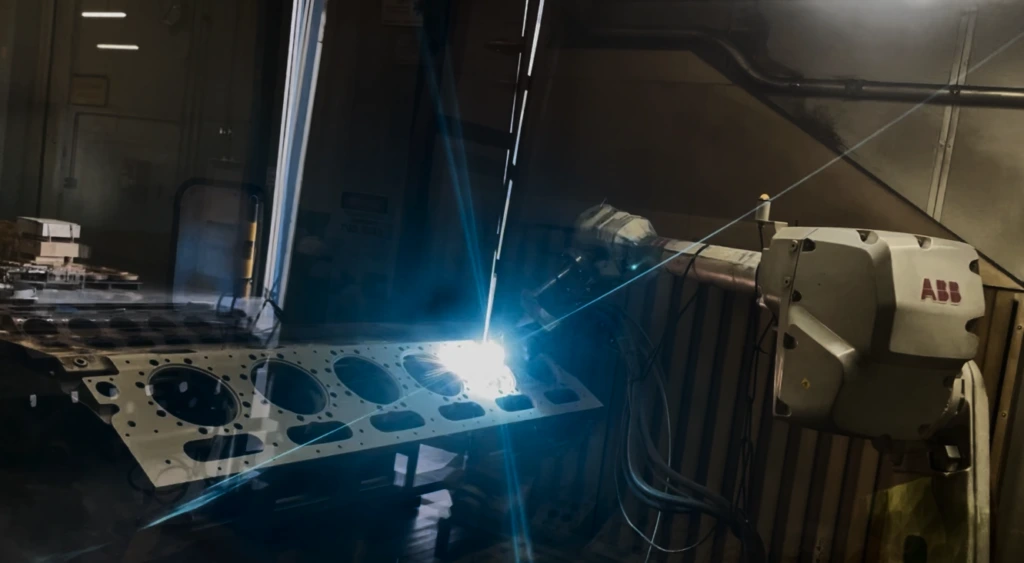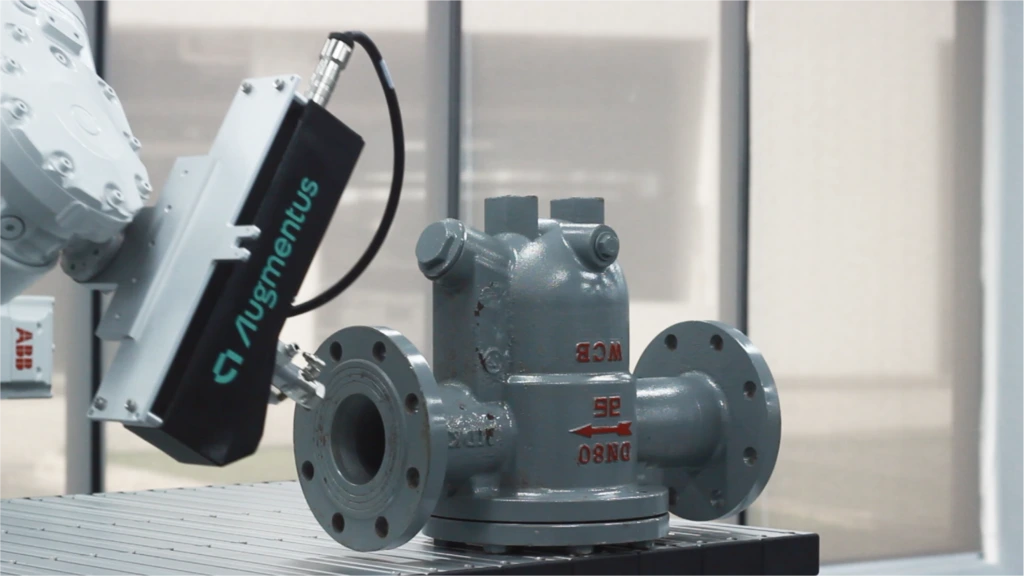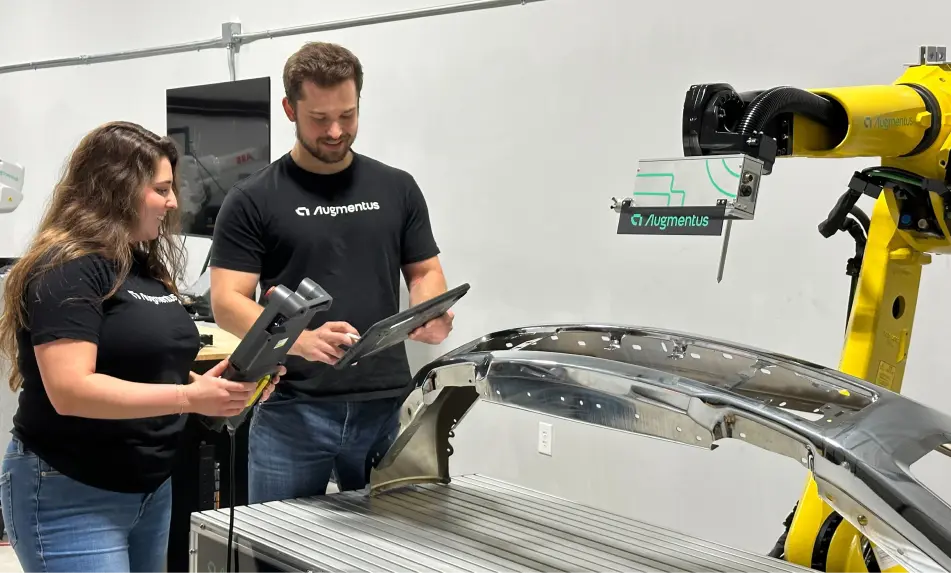Since the late 1980s, the integration of robotics and automation in thermal spray applications has advanced significantly, especially in the automotive and aerospace industries. These sectors adopted this technology for high-quality, durable surface coatings applied uniformly and efficiently. The evolution of robotics in thermal spraying has resulted in more sophisticated applications with enhanced programmability, improved motion control, and integration with real-time monitoring systems.
This case study explores how Augmentus utilizes advanced robot vision and automated motion planning to enhance the thermal spraying process for a client.

